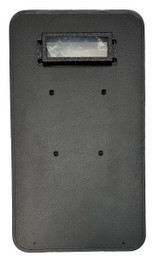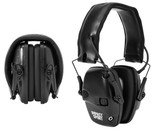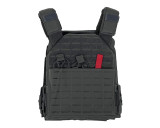Understanding Body Armor Testing: Ensuring Maximum Protection
Introduction
Body armor is crucial for the safety of law enforcement, military personnel, and civilians in dangerous situations. To ensure its effectiveness, rigorous testing procedures are in place. This article delves into the testing methods and standards that certify body armor's protective capabilities.

IJ Testing Overview
The National Institute of Justice (NIJ) classifies body armor into levels based on their ballistic resistance. These levels range from IIA to IV, with each offering different degrees of protection. Manufacturers must submit multiple samples for testing to ensure compliance with these standards.
Range Testing
One of the primary testing methods is range testing, where armor is subjected to bullets from various calibers and distances. This evaluates the armor's ability to stop different types of projectiles. Soft armor is tested with handgun rounds, while hard armor faces rifle ammunition. The number of shots and the specific ammunition types vary according to the armor level being tested.
Backface Deformation
Stopping a bullet is one aspect, but minimizing blunt force trauma is equally important. Backface deformation measures the indentation on the opposite side of the armor upon impact. Excessive deformation can cause serious injury, so this test ensures the armor's ability to absorb and dissipate the force of a bullet effectively.
Water Submersion
Armor is also tested for performance in wet conditions. Samples are submerged in water for a specified period and then inspected for any degradation or reduction in ballistic capabilities. This ensures the armor remains effective in maritime or rainy environments.

Conditioning
The conditioning phase simulates wear and tear over time. Armor samples undergo rigorous tests, including industrial drying, humidity exposure, and impact simulations. These tests assess the armor's durability and long-term resilience. Ensuring the armor can withstand environmental stressors is vital for its reliability.
Follow-Up Inspection and Compliance
Regular follow-up inspections ensure that certified body armor continues to meet NIJ standards. These inspections verify that the armor maintains its protective qualities over time, providing ongoing assurance of its effectiveness.
Conclusion
The comprehensive testing process for body armor reflects a commitment to safety and quality. From range testing to conditioning, each step is designed to ensure that the armor can protect lives in the most demanding situations. Certified body armor provides crucial protection for those in high-risk environments, offering peace of mind and enhanced safety.
Additional Information
To enhance the article, here are some supplementary details:
- Environmental Testing: Body armor is exposed to extreme temperatures, both hot and cold, to ensure it performs under various climatic conditions.
- Chemical Resistance: Testing includes exposure to chemicals like gasoline and oils to ensure the armor's materials don't degrade upon contact.
- Aging Tests: Simulating the aging process helps determine how the armor will perform over years of use.
- Ergonomics and Comfort: Testing for comfort and fit is crucial, as ill-fitting armor can impede movement and reduce effectiveness.
- Manufacturer's Warranty and Replacement Policies: Information on warranties and replacement policies can provide additional peace of mind to users.
By understanding and undergoing these extensive testing procedures, body armor can reliably serve those who depend on it for protection in critical situations.
Recent Posts
-
Understanding Ballistic Shield Ratings and Their Applications
The Trusted Name in Tactical Defense - BattleSteel® When it comes to protecting those who protect us …2025-04-19 -
The Importance of Hearing Protection in Tactical Environments
The Legacy of BattleSteel® BattleSteel® is a trusted name in the world of tactical defense equipment …2025-04-14 -
How to Properly Fit and Wear a Plate Carrier
About BattleSteel and Their Mission BattleSteel is a trusted name in the tactical gear industry, ren …2025-04-11


